This is the second paper I did on a Laurence Olivier film last semester for my course. I was interested in looking at Larry and his important role in the British film industry during the 1940s. His Shakespeare films exemplified what critics back then termed “quality” cinema. This paper is an exploration of the muddled definition of the term and how it applied to the 1948 version of Hamlet.
‘A Study in Hamlet‘: Laurence Olivier and the British ‘Quality’ Film
© Kendra Bean
Written for the Traditions in British Cinema MA course
King’s College London
January 2011
Prior to WWII, British cinema was not regarded in a very serious light. Though the 1930s was a productive period and many émigré directors and technicians were inflecting a “rich stylistic and thematic corpus of films,”[i] the output of the British film industry at this time was seen by both critics on the home front and cinephiles abroad as being inferior to Hollywood standards and unworthy of praise. It was not until the early 1940s that critics began discerning a wave of films that “seemed to have a positive cultural identity of their own.”[ii] From roughly 1942 to 1948, critics from periodicals such as The Times, Evening Standard, and The Observer used the term “quality” to define certain British films that they believed were artistic, realistic, embedded with deeper meaning, infused with a particular Britishness or national identity, and would hopefully appeal to a wide variety of audiences in Britain and abroad. By imposing such highbrow judgments on films, the “quality” critics “hoped to change the nature of mass cinema in Britain.”[iii]
Many “quality” films made during this time—In Which We Serve (David Lean and Noel Coward, 1942), The Way to the Stars (Anthony Asquith, 1945), and Brief Encounter (David Lean, 1945), to name a few—also fell under the category of the “prestige” film. This term was coined by producers such as J. Arthur Rank and other industry officials, and applied to films that were made on a larger budget, had “predictable box-office components such as stars and a source of the original story (play or film),” and could financially compete with the American market.[iv] At times the two terms went hand in hand and even delineated the same meaning, but on occasion they were at odds with each other. The films of Michael Powell and Emeric Pressburger, for example, were “prestige” pictures. They were financed by mogul J. Arthur Rank, starred a troupe of seasoned actors including Roger Livesey and Anton Walbrook, and had enough spectacle and creativity to entertain cinemagoers. Their 1948 film The Red Shoes was even nominated for the Best Picture Academy Award. However, Powell and Pressburger pictures did not impress the “quality” critics who brushed them aside due to their reliance on fantasy and “extravagance” rather than a sense of “documentary” realism.[v]
One film that managed to bridge the gap between “quality” and “prestige” was Laurence Olivier’s Hamlet (1948). Released at the end of what John Ellis has dubbed “the quality film adventure,” Hamlet was a high-budget Shakespearean art film funded by the Rank Organization and, in some ways, British cinema’s crowning achievement up to that point. It solidified Laurence Olivier’s stature as an actor-director, and it became the first non-American film to win Hollywood’s top prize: the Academy Award for Best Picture of 1948 (this on top of Olivier directing himself to a Best Actor Oscar). Yet despite its accolades, Hamlet has, over time, come under much scrutiny. New York Times critic Terrence Rafferty wrote in his From the Current essay for the Criterion Collection DVD edition of the film:
The consensus nowadays is that Hamlet is the most problematic of Olivier’s three self-directed Shakespeare movies—that Henry V (1944) is a more vibrant and imaginative piece of filmmaking, and that Richard III (1954) records a more memorable performance. By comparison to those clear triumphs, this Hamlet, once so celebrated, has taken on the quality of a forlorn and nearly forgotten thing, like Yorick’s skull.[vi]
In this essay, I would like to steer the discourse away from contemporary criticism and re-examine the film through a historical lens by looking at the ways in which Hamlet conforms to the notions of “quality” cinema laid out by critics in the 1940s, as well as how it was critically received upon its initial release.
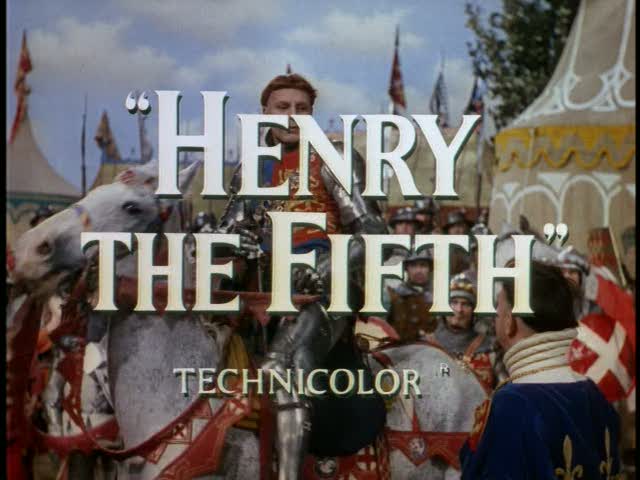
It should be acknowledged from the beginning that Hamlet was made possible by the success of Olivier’s previous Shakespeare film Henry V. Many scholars such as Charles Barr cite Henry V as setting the standard for quality British cinema during the war years.[vii] Olivier had been commissioned by producer Filippo del Giudice and discharged from the Navy to make the film about England’s patriotic king as a wartime morale-booster. His involvement in previous British propaganda films including Lady Hamilton (Alexander Korda, 1941), Words for Battle (Humphrey Jennings, 1941), The 49th Parallel (Michael Powell, 1941), and the pro-Russian film The Demi-Paradise (Anthony Asquith, 1943), as well as his popularity as a classical theatre actor who had done some of the famous speeches from Henry V for radio, influenced this decision.[viii]
Before Henry V, Olivier was of the opinion that Shakespeare was not suitable for the screen. It was too theatrical.[ix] Previous film adaptations including Max Reinhardt’s star-studded and shimmering A Midsummer Night’s Dream (1935),George Cukor’s Romeo and Juliet (1936) with Leslie Howard and Norma Shearer, and Paul Czinner’s As You Like It (1936)–a vehicle for the director’s wife, Elizabeth Bergner–in which Olivier starred as Orlando, had all been relative failures. If Olivier was going to take part in Henry V, “he wanted to have the final say in the way it was produced and cast.”[x] Del Giudice gave Olivier this freedom (as he would do again for Hamlet), which in turn gave Olivier a boost of confidence as a first-time film director.[xi]
Realism was the key to making Henry V a successful Shakespearean film adaptation. To make the dated Elizabethan language seem more plausible to cinemagoers, Olivier framed the story with the Chorus acting out his role in a 17th Century performance at Shakespeare’s Globe Theatre in London. Beginning and ending the film on the stage “solved the wider, even more worrying problem of how to blend the artificiality of Shakespearian verse with the modulated sincerity to which audiences are accustomed in the cinema…if in this Bankside prologue the performance had all the bombast of Elizabethan acting, then, by contrast, the verse and prose dialogue of the film proper, which would be spoken quietly and sincerely, would seem natural.”[xii] In contrast with the deliberate theatricality of the opening and closing scenes, the “film proper” was shot outdoors using multitudes of extras and horses. The combination of historical theatrical setting and location shooting melded seamlessly into an authentic backdrop against which Henry (and Olivier) could deliver his rabble-rousing soliloquies to audiences both within and outside of the film. On top of this, the use of Technicolor gave an added boost to its rich, patriotic tone.

Henry V also had what Ellis calls “the spirit of reality.” According to “quality” critics of the time, the “creative, expressive level” of a film “is that of emotional truth: it is not just providing a convincing representation, but of giving the total emotional experience of people and events so that their truth shines from the screen, ‘expressing the spirit of a country’ or of an individual.”[xiii] The most famous example of this is probably the “St Crispin’s Day” speech given before Henry’s army fight the French at Agincourt. Henry’s faithful soldiers crowd around them as he steps up onto a platform and declares every man who fights with him to be his brother no matter what his class or rank. Sentiments such as these reflected the unified spirit of Britain during the war.
Olivier’s creativity as a director helped Henry V break from the standards of the Shakespeare films that came before it, and its “unforced exploitation of parallels” between Shakespeare’s time and modern day Britain helped it earn critics’ praise.[xiv] The film’s popularity in London spread by word of mouth, and in the US, J. Arthur Rank distributed the film by roadshowing it, releasing it in select theatres in major cities to appeal to a high-brow audience, letting the profits trickle in slowly.[xv] It was a financial success as well as an artistic one, garnering Olivier with a special Academy Award for his achievements.
Hamlet, released four years later, was made under a different context. The war was no longer an influence and patriotism no longer needed, which meant that Olivier could exercise more creative freedom when it came to his personal interpretation of the play than he had been able to do with various ministry officials looking over his shoulder during Henry V. The most apparent measure Olivier took when preparing Hamlet’s screenplay was cutting a large part of Shakespeare’s original text, most notably omitting the characters Rosencrantz and Guildenstern as well as some of the play’s famous soliloquies. Knowing that this would be a bone of contention for critics and audience members who knew their Shakespeare, Olivier and his screenwriter Alan Dent made it clear from the beginning that the textual omissions were made for specific reasons. Much like big-budget films made today, a supplemental behind-the-scenes book was published as a marketing ploy that talked about how the film was made. In it, Olivier referred to the film as a “study in Hamlet,” a chiaroscuro engraving rather than a painting. Not only would the cuts allow for the 4 ½ hour play to be condensed into 2 ½ hours for the screen, they also simplified the narrative so the filmmakers could concentrate on a particular aspect of Hamlet’s personality.[xvi] Rather than “expressing the spirit of a country” as Henry V did, Hamlet is “stripped of all but bear essentials” and belongs to “no particular country or period.”[xvii] This film focuses solely on the individual, conveying its “authenticity” through an exploration of the Prince of Denmark’s psyche.
Much like Henry V, Hamlet embodies a sense of realism and unity. For “quality” critics, unity involved “the perfect weaving of sound, movement and texture into a story” that works to “create an effect, through mind and heart, that no other medium could so quickly or so generally achieve.”[xviii] Because Hamlet was written for the stage, Olivier was given the task of using stylistic techniques to distinguish this production between a film and a filmed record of a stage performance.
One of the ways this unity and distinction is achieved is through the use of voice-over narration. The film opens at the end with a dead Hamlet being laid out at the top of Elsinore Castle and a voice over (Olivier as narrator) telling us the central theme of the story: “This is the story of a man who could not make up his mind.” It foreshadows the events that unfold in the narrative, and serves as “a neat metaphor for the uncertainty of the immediate postwar years.”[xix] By vocalizing the main point at the beginning of the film, Hamlet is straightforward in presenting the “dramatic link between real-life people and their problems.”[xx] In addition, some of Hamlet’s soliloquies are recited in voice-over rather than spoken aloud, and emotions are played out through physical movements and subtle facial gestures. For example, the “To be or not to be” scene alternates between being spoken aloud and using voice-over. Hamlet begs the question of whether life is worth living, and then, as he forlornly peers over a cliff to the sea below, he draws his knife and holds it to his throat while he thinks the line, “or to take arms against a sea of troubles, and by opposing end them.” This method of performance would not have been possible on stage, but Olivier’suse of voice-over here adds to the psychological depth of the scene.
Critics of the time were most likely accustomed to Olivier’s fascination with psychoanalyzing Shakespearean roles. When he had performed in Hamlet on stage for Tyrone Guthrie at the Old Vic in 1937, he had been inspired by a 1923 study in applied psychoanalysis written by Dr. Ernest Jones. Jones “was concerned with…Hamlet’s hesitancy in avenging his father’s murder,” and cited the reason for this as Hamlet suffering from Oedipus Complex; Hamlet is “in love” with his mother and therefore identifies with his step-father Claudius, whom he despises.[xxi] This idea was carried over into the film version, where Hamlet’s interactions with Gertrude are sensual and erotic. Two scenes are worth mentioning here. The first is the scene in which Hamlet accidentally kills Polonius. He corners his mother in her bedroom and accuses her of being ignorant to the obvious fact that she married the man that killed her first husband (Hamlet’s father). In a rage, he throws Gertrude onto the bed where she is sprawled out in an erotic position, as if waiting for him to join her. Her expression goes from one of terror to one of eroticism as she softly smiles at him. The camera then goes in and out of focus on Gertrude’s face before turning on Hamlet, staring wide-eyed at his mother. This is accompanied by a non-diagetic heartbeat to represent temporary madness (we also witness the heartbeat in the scene when Hamlet encounters the ghost of his dead father). Hamlet then kisses Gertrude on the mouth and asks her not to sleep with her husband. At the end of the film during the famous duel scene between Hamlet and Laertes, Gertrude, knowing that Hamlet will die if he drinks from the cup being offered to him by Claudius, and not being able to bear the thought of being parted from her son, willingly drinks the poison-laced wine herself. Compare these scenes to Hamlet’s chilly interactions with his love interest, Ophelia, and it is easy to see the extent of Jones’ influence.
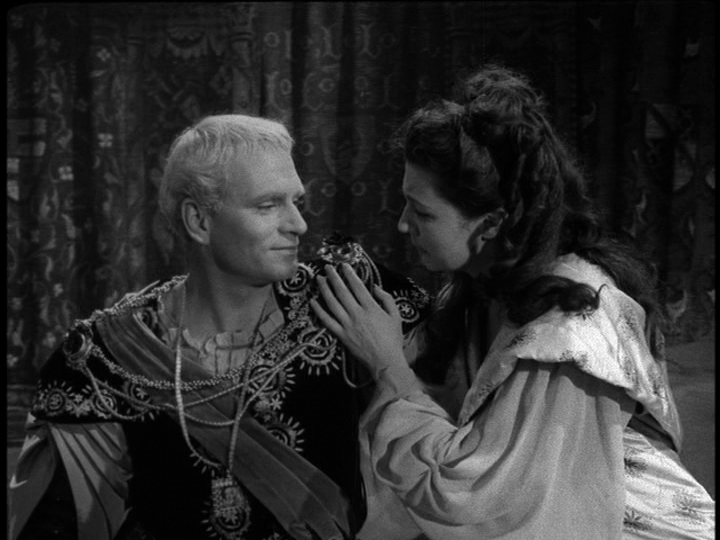
Thematic elements are closely tied with stylistic components, which play another large part in the film’s unity. Hamlet is a highly stylized film. Much of this can be attributed to set and costume designer Roger Furse, whose designs are minimalist but not unrealistic. The rooms and mise-en-scene are bare, placing the story outside of any one historical period. The unobtrusive sets allow the performances to come to the fore. The only scene that stands out as lavish in its stylization is Ophelia’s suicide, which invokes the poetic, ethereal and tragic romanticism of John Everett Millais’ 1851 Pre-Raphaelite painting Ophelia, which hangs in the Tate and was a direct inspiration to Furse. This scene is not played out in the theatrical version, but rather described by Gertrude, “in the most beautiful language. The scene had to conform to her description. It had, if possible, to be as beautiful to look on as the verse was to hear.”[xxii] In the film, the scene relies solely on visuals. We see Ophelia dressed in white, floating serenely in a river, surrounded by reeds and water lilies, while Gertrude’s voice narrates in a poetic tone. By incorporating the descriptive lines from the play into the mise-en-scene, Furse and Olivier are able to further distance the film from a stage production.
Critics had trouble agreeing on the individuals responsible for “bringing together all of the necessary elements into a unified, inspiring rendering of reality” in “quality” films.[xxiii] Although Roger Furse and other technicians such as art director Carmen Dillon and camera operator Desmond Dickinson all played an equally important part in creating Hamlet, it was Olivier as producer-director-star who was given most of the credit for inventing a cohesive production. Several critics of the time labeled Olivier as an auteur. Richard L. Coe of the Washington Post wrote in his review, “So entwined are Olivier the actor and Olivier the director that it is impossible to separate his performance as the Prince from the general whole he has spun.”[xxiv] The Times critic Leonard Mosley echoed this sentiment: “Over all this film the influence of Olivier broods majestically.”[xxv]
“Brooding” is the ideal word to describe the mood of the film. Everything from William Walton’s score with its heavy emphasis on strings, to the use of high-contrast black and white cinematography, to the dark and empty mise-en-scene imbue the narrative with the voice of tragedy and pathos, recalling film noir. Hamlet is also permeated with movement. The waves of the North Sea violently crash against the cliffs below the castle during the “to be or not to be” scene. Heavy mists creep about the towers and shroud some of the scenes in nightmarish mystery. The camera literally flows through the narrative space like an unseen character, tracking through the barren halls and floating up the winding stone staircases of Elsinore, as if it has a life of its own:
The restless but oddly serene camera movement is unnerving because it feels subjective yet we can’t quite identify the subject. Something—as implacable as a monster in a horror movie—is stalking these people, observing them from impossible heights and across great distances, while itself remaining out of sight. In Olivier’s Hamlet, we seem to be watching human behavior, in all its awful futility, through the cold, unblinking eyes of God.[xxvi]
When Hamlet encounters the ghost of his father, the camera goes in and out of focus, visualizing the pulsing, non-diagetic sound of a heartbeat that accompanies it. As Hamlet watches Ophelia walking outside the castle in the beginning of the film, the deep-focus photography visualizes his internal trouble and isolation. These combined elements give the film a poetic quality, “profound” pleasure and the “cinematic sense”[xxvii] of visual artistry that is “intrinsic” but not “pretentious.”[xxviii]
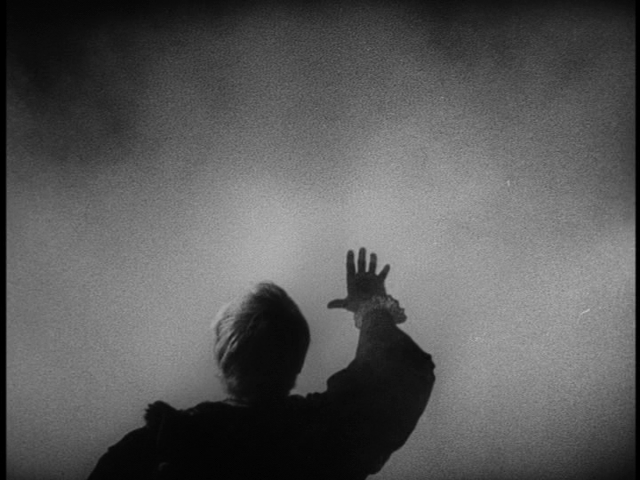
“Quality films” were differentiated from “art” films because critics hoped the films they were touting would attract wide audiences with good taste, but many of the “quality” films that were released after the war, including Hamlet, were also “art.” Angela Ndalianis defines art cinema as “a niche within an international market whose major selling point is its status as ‘art’, quality and culture—underwritten by the figure of the director as auteur who functions as a ‘brand name,’ a means of labeling and selling a film.” Art films are also exhibited differently than mainstream films, often being screened in smaller theatres in “urban cities throughout the US.” Hamlet was made at a time when art cinema was beginning to attract considerable attention around the world. In the 1940s and 50s, “the exclusivity fostered by the” demand for and construction of “art-house spaces, the ethos of ‘quality’, intellectual stimulations and ‘high art’ was generated by other social factors” such as film festivals. [xxix] Olivier spent less time behind the camera than other art directors of his generation like Alfred Hitchcock, Vittorio DeSica and Michael Powell, yet he was a brand name due to his stature as an actor, and his success with Henry V was, as mentioned above, a major selling point for Hamlet. Hamlet was also a winner on the film festival and awards show circuits, picking up honors at the Venice Film Festival, Golden Globes, BAFTAs and New York Film Critics Circle, among others. It is also interesting to note that the film awarded the Oscar for Best Foreign Film of 1948 (the same year Hamlet won) was Ladri di Biciclette (Vittorio DeSica, 1948), clearly signaling Hollywood’s recognition and appreciation of the artistic talent coming out of Europe.
By the time Hamlet premiered in London in May 1948, “quality” critics were becoming disillusioned with both British films and their audiences. “Everywhere,” observes Ellis, “British society was proving rather more impervious to good sense, good taste and good values than had been hoped for.”[xxx] It seemed like the “quality” film movement had been but a passing phase. Thus, Hamlet proved a breath of fresh air for many reviewers who saw it as at least a temporary and welcome restoration of cultural prestige to the indigenous industry. Historical reviews from the BFI clippings archive reveal the stature placed upon Olivier’s film. Hamlet was, according to Stephen Watts of The Picturegoer magazine, “intelligent,” “real,” and “exciting.” It had “plenty of action,” as well as “great emotional drama…It restores the prestige of British films, which has been slipping lately”[xxxi] Milton Shulman echoed these sentiments in his review for the Evening Standard: “Since it normally requires a great effort of concentration to remember the names of most pictures one sees these days—let alone what they are all about—it is exciting to realize that here at last is a film that yields vivid moments of emotion many days after leaving the seductive seclusion of the darkened cinema.”[xxxii]
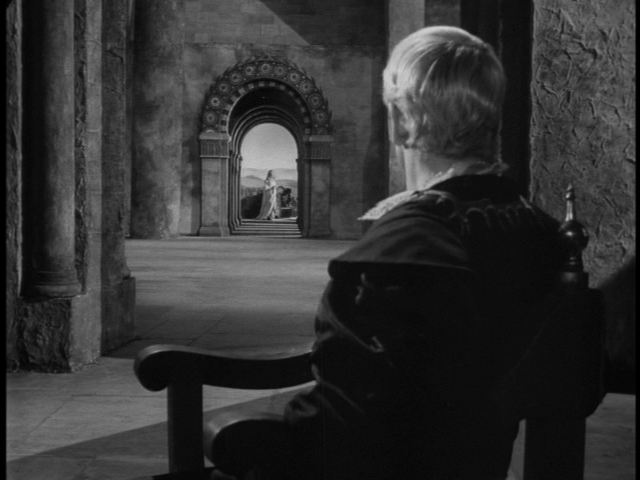
This was a film that would be accessible and entertaining to both Shakespeare purists and the masses. “The greatness of the Olivier ‘Hamlet’,” wrote Richard L. Coe, “is that he has made it a movie for everybody.”[xxxiii] This is evidenced by the Daily Mirror’s Reg Whitley, who professed to never having read Hamlet, and admitted that Shakespeare was not his “cup of tea.” Yet the film managed to stir his interests: “So when I went to Laurence Olivier’s film of the play yesterday I was what some people might call an ignoramus…All I can say is that this film is a British movie masterpiece artistically ahead of any Continental or American production I can recall.”[xxxiv] Even the Queen had good things to say about it, praising the “brilliant acting, beautiful diction, and wonderful photography.”[xxxv]
Members of the critical faculty rejoiced in the film’s return to British culture: “To interpret faithfully and maturely our great literary heritage to the cinema-going millions,” again quoting Shulman, “is not only a unique opportunity that the British industry should grasp firmly with both hands—but it is their duty as well…What we need on the screen are more like Henry V, Pygmalion, Kipps and Great Expectations—and less orchids, good-time girls, and wicked ladies.”[xxxvi] Many pointed out the textual cuts in the play, but emphasizing that the film was still “quality” even if it was missing a fair amount of the original play almost always followed this. Dylis Powell’s review in the Sunday Times embodied this train of thought:
Since we are dealing with a film of two and a-half hours drawn from a play of four and a-half hours, let me forestall the purists who will complain of the shock to their nerves produced by the manipulation of the text…Very well, then, so we lose some of the poetry and some of the people, and I shall not be the only one compelled to return to the original. Compelled is the word; I do not remember feeling a sharper desire to enrich one experience by another than the longing which sent me home from the film last week to read and re-read the play.[xxxvii]
A major point of agreement among critics was the power of the actors’ performances. “For once it is to the acting that one returns and returns,” wrote Powell.[xxxviii] Felix Aylmer and Stanley Holloway particularly impressed Reg Whitley in their roles as Polonius and the Gravedigger.[xxxix] Richard Winnington said of Jean Simmons’ Ophelia, “She is all light and youth, tender, sensitive and heartrending,”[xl] while Leonard Mosley thought Eileen Herlie’s Gertrude “a brilliant performance.”[xli] Not surprisingly, the most flattering comments went to Olivier. “Sir Laurence’s own performance—a relatively quiet and subdued one—is faultlessly articulated,” wrote Paul Dehn of the Sunday Chronicle on May 9, 1948. The London critic of the Manchester Guardian said, “The greatest compliment that one can pay to this Prince of Denmark is to say that it is difficult to consider him without, in the same breath, talking about Sir Laurence,”[xlii] Olivier’s performance was “altogether one of the finest pieces of acting that either the cinema or the theatre has seen in a long time.”[xliii]
Although praise for Hamlet was nearly universal, critics did manage to find some faults. Campbell Dixon of the Daily Telegraph declared the film a triumph but criticized Olivier for his over-reliance on the roaming camera: “Textual cutting was unavoidable,” and “even on the stage helps enormously to tighten up the action…I only wish the brilliant producer-director and star had been as strict with his camera.”[xliv] Dixon was also of the opinion that, despite his efforts to make a purely cinematic Shakespearean adaptation, “Olivier still uses the camera to achieve effects that a stage producer might aspire to if his stage were big enough and money no object.” The Observer’s C. A. Lejeune found the ghost of Hamlet’s father to be a major detractor from the realism of the film as a whole. The ghost manages “to be both unrecognizable and inaudible…His account of the murder is illustrated by a flashback, perhaps wisely, since we can scarcely make out a word of it; his delivery being a mixture of a station announcer on the Metropolitan and a series of hearty Zulu clicks.”[xlv] Leonard Moseley thought the ghost called to mind “a loudspeaker at Wembley, heard from the distance,” rather than a specter lurking in the shadows.[xlvi] Still others complained about Hamlet’s age compared to his mother (Eileen Herlie was 13 years Olivier’s junior), that Olivier’s Nordic bleached hair was unnecessary,[xlvii] and that the film could have been just successful if made on a smaller budget.[xlviii]
One critic echoed Olivier’s earlier sentiments that Shakespeare, or, at least Hamlet, was still not suited for the screen, despite Olivier’s attempts to prove otherwise. Jack Davies of the Sunday Graphic, who thought Olivier’s performance so outstanding, said the film as a film did not quite work:
It is not great cinema. The film is an art designed for action, not for speech…for a film and I write this as a filmgoer, there is a great deal of talking and thinking aloud. And although the words are the most beautiful (and best known) ever written, from a cinematic point of view they inevitably make the film move slowly.[xlix]
But, such disparaging comments paled in comparison to the overall laurels Hamlet received. As Leonard Mosleystated, “The criticism which any bold and imaginative experiment must provoke should not obscure gratitude. Sir Laurence Olivier and a distinguished cast of actors have created a memorable film…”[l]
Having learned from the success of Henry V in the USA, J. Arthur Rank promoted Olivier’s second venture in much the same fashion. It was distributed by Universal, exhibited in select cities in bigger theatres than its predecessor, and marketed as a prestige picture toward educational groups such as libraries, schools, literary societies, and women’s clubs.[li] Much like Henry V, Hamlet was also a box office success domestically and abroad; it ran for over a year at the Park Avenue Theatre in New York.[lii] Together with other Rank-produced films including Caesar and Cleopatra (Gabriel Pascal, 1945), starring Olivier’s then-wife Vivien Leigh, Great Expectations (David Lean, 1946), and of course Henry V, Hamlet helped pull in roughly $2 million for Britain.[liii] In this way Hamlet achieved what quality critics hoped all British films would: it brought the critics’ selective notions of good taste to millions and still managed to be financially triumphant.
Shakespeare turned out to be Laurence Olivier’s signature as an actor-director. Following Hamlet, he continued to explore the different ways in which the Bard’s plays could be presented both on stage and screen. Richard III (1955) and his filmed National Theatre performances of Othello (1965) and The Merchant of Venice (1973), along with his turn as King Lear for Granada Television in 1983 were all critical successes that showed different facets of Olivier’s acting and directorial skills. Yet it is his two self-directed films from the 40s that stand out today as embodying an era of artistry and sophistication in British cinema. Henry V proved Shakespeare’s work could make successful cinema, and it rallied a nation in its finest hour, while Hamlet displayed the creativity of a master craftsman and helped restore stature when “quality” critics began to lose faith in the industry and audiences. Hamlet may have taken its fair share of criticisms in the years since its initial release, but it remains a quality piece of British filmmaking from the post-war era. Perhaps Terrence Rafferty best articulates Olivier’s achievement when he says, “Hamlet may actually be his greatest achievement as a filmmaker. In Olivier’s hands, Shakespeare’s elusive, haunted, infinitely suggestive tragedy becomes unusually vivid and compelling, and yet remains, as it must, wondrous strange.”[liv]
[i] Sarah Street, “British Cinema: Introduction,” in Pam Cook, ed., The Cinema Book Third Edition (London: British Film Institute, 2007), 175.
[ii] John Ellis, “The Quality Film Adventure: British Critics and the Cinema 1942-1948,” in Andrew Higson, ed., Dissolving Views: Key Writings on British Cinema (London: Cassell, 1996), 66.
[iii] Ellis, “Quality,” 69.
[iv] Ellis, “Quality,” 67.
[v] Ellis, “Quality,” 71.
[vi] Terrence Rafferty, “From the Current: Hamlet, The Criterion Collection,” http://www.criterion.com/current/posts/85-hamlet (Sept. 18, 2000).
[vii] Chares Barr, ed., All Our Yesterdays: 90 Years of British Cinema (London: British Film Institute, 1985), 10.
[viii] Felix Barker, The Oliviers: A biography (London: Hamish Hamilton, 1953), 199.
[ix] Barker, Oliviers, 200.
[x] Barker, Oliviers, 199.
[xi] Geoffrey Macnab, J. Arthur Rank and the British Film Industry (London and New York: Routledge, 1994), 88.
12 Barker, Oliviers, 200.
[xiii] Ellis, “Quality,” 84.
[xiv] Barr, All Our Yesterdays, 12.
[xv] Sarah Street, Transatlantic Crossings: British Feature Films in the USA (New York: The Contimuum International Publishing Group Inc, 2002), 98.
[xvi] Laurence Olivier, “Introduction,” in Alan Dent, ed., Hamlet: The Film and the Play (London: World Film Publications Limited, 1948), 2.
[xvii] Barker, Oliviers, 255.
[xviii] Ellis, “Quality,” 76.
[xix] Michael Brooke, “Hamlet (1948)” BFI Screenonline, accessed January 5, 2011, http://www.screenonline.org.uk/film/id/440240/.
[xx] Ellis, “Quality,” 75.
[xxi] Barker, Oliviers, 118.
[xxii] Roger Furse, “Designing the Film of Hamlet,” in Alan Dent, ed., Hamlet: The Film and the Play (London: World Film Publications Limited, 1948), 29.
[xxiii] Ellis, “Quality,” 86.
[xxiv] Richard L. Coe, “Hamlet is Given Back to the Masses,” Washington Post, October 21, 1948.
[xxv] Leonard Mosley, “Olivier’s Hamlet is brutal, savage—and new,” The Times Educational Supplement, May 15, 1948.
[xxvi] Rafferty, “From the Current”.
[xxvii] Ellis, “Quality,” 76.
[xxviii] Stephen Watts, “’Hamlet’ restores our film prestige,” The Picturegoer, May 1948.
[xxix] Angela Ndalianis, “Art Cinema,” in Pam Cook, ed., The Cinema Book Third Edition (London: British Film Institute, 2007), 86.
[xxx] Ellis, “Quality,” 88.
[xxxi] Watts, “Hamlet.”
[xxxii] Milton Schulman, “Olivier Wins the Debate,” Evening Standard, May 7, 1948.
[xxxiii] Coe, “Hamlet.”
[xxxiv] Reg Whitley, “This film ‘Hamlet’: I’m telling you…,” The Daily Mirror, May 1948.
[xxxv] Reg Whitley, “Royal family See Hamlet: 200 police hold crowd,” The Daily Mirror, May 1948.
[xxxvi] Schulman, “Olivier Wins.”
[xxxvii] Dylis Powell, “The Olivier ‘Hamlet’,” The Sunday Times, May 1948.
[xxxviii] Powell, “Olivier ‘Hamlet’”.
[xxxix] Whitley, “This film.”
[xl] Richard Winnington, “Olivier is Magnificent,” The Daily Herald, May 1948.
[xli] Mosley, “Olivier’s Hamlet”.
[xlii] “The Film of Hamlet,” Manchester Guardian, May 6, 1948.
[xliii] Jack Davies, “Jack Davies talking about the new films,” Sunday Graphic, May 1948.
[xliv] Campbell Dixon, “Olivier’s Hamlet Triumph with Minor Flaws,” Daily Telegraph, May 10, 1948.
[xlv] C. A. Lejeune, “Hamlet the Dane,” The Observer, May 1948.
[xlvi] Mosley, “Olivier’s Hamlet”.
[xlvii] Davies, “Jack Davies”.
[xlviii] Winnington, “Olivier is Magnificent”.
[xlix] Davies, “Jack Davies”.
[l] Mosley, “Olivier’s Hamlet”.
[li] “Hamlet (1948),” Boxoffice Magazine, accessed on January 5, 2011, http://www.boxofficemagazine.com/reviews/2008-08-hamlet-1948-1.
[lii] “Year’s Run: Hamlet in US Film Sets Record,” Daily Telegraph, September 30, 1949.
[liii] “The post-war domestic marketplace,” accessed on January 5, 2011, http://encyclopedia.jrank.org/articles/pages/2938/The-Postwar-Domestic-Marketplace.html
[liv] Rafferty, “From the Current”.

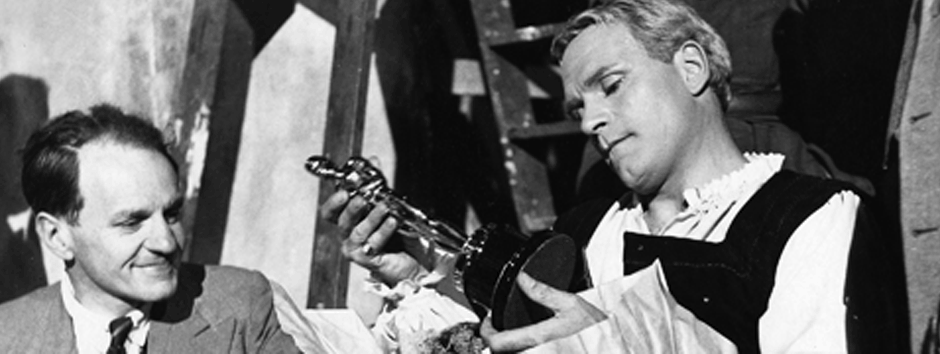
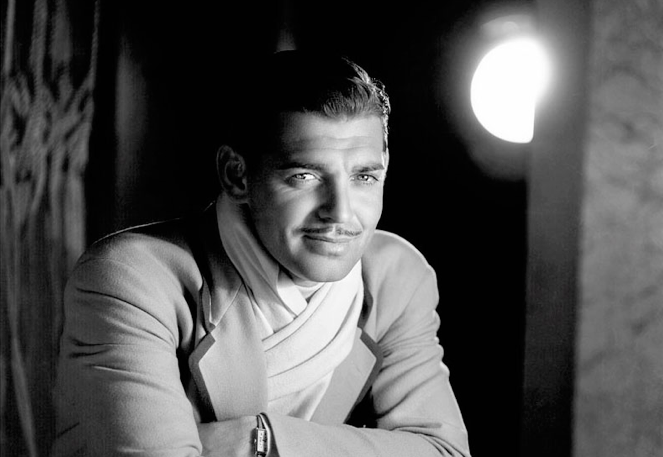

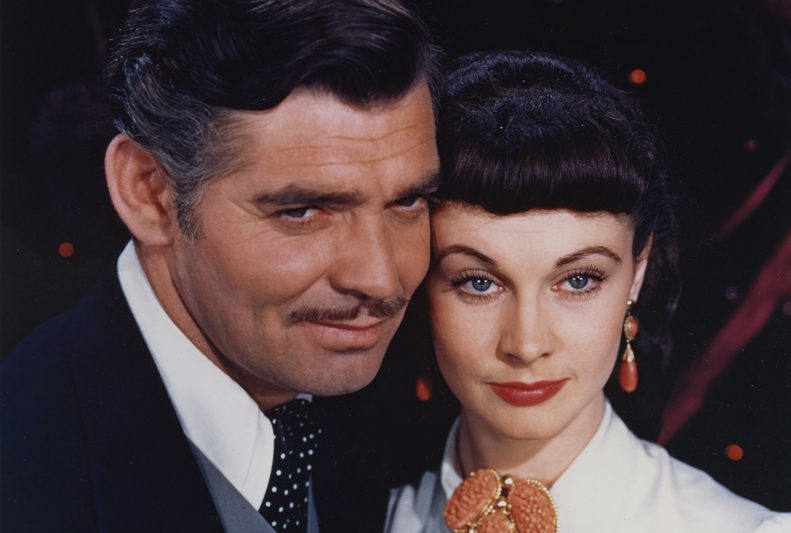
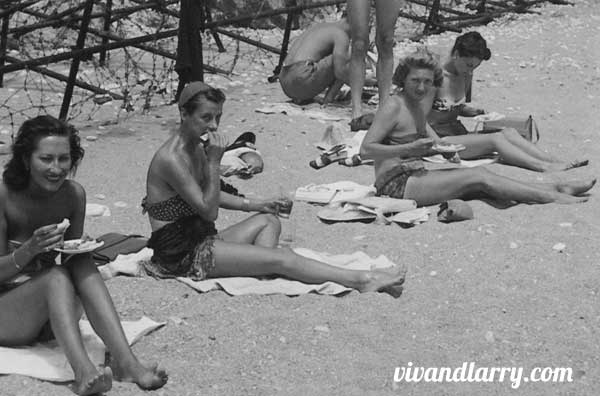
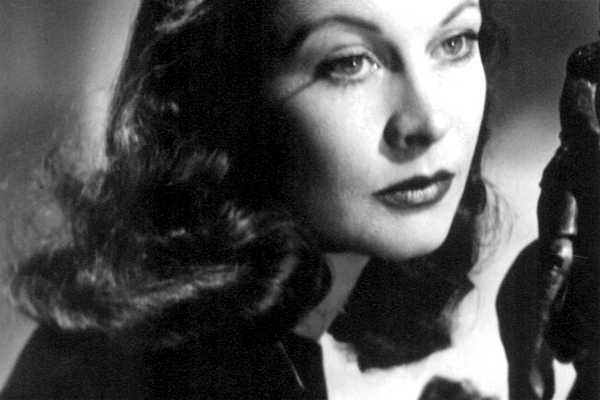
This web is really precious to me…I found your paper so interesting,you obviously put your heart in your work. “Hamlet” has always been a favourite of mine.It’s true, critics like to find faults in movies that have been once highly praised but Oliviers’ “Hamlet” is a masterpiece that is part of film history.It has influenced so many filmmakers…for instance, Polanski once said tha this was the movie that impressed him most as a film goer
Kendra….I read your whole piece in its entirety.Wow..are you the consumate cinema historian! I must admit that this is the first I have read of any type of summation of British film making from a critical & historical point of view esp in relation to Shakespeare on screen. So where do you hope to take this talent that you have?
Ric
Concord, Nc usa
@matilde–Thank you. Hamlet has always been my favorite of Larry’s Shakespeare films. I think it’s a beautiful movie.
@ric–Thanks. I think there are quite a few books that have been written about Shakespeare film adaptations. I want to be a historian and writer!
I first saw olivier’s film of hamlet in 1949 when it was first released in the UK. I was at school at the time. We went to see the film in London with our English literature teacher as we where studying Shakespeare’s plays. I had heard of Laurence Olivier during the war as my mother was a fan of his and went to see his film of henry v. My first real experience with Shakespeare I was nit sure of as I thought the film would be boring and hard to understand. But olivier’s acting and the film made me appreciate Shakespeare’s plays later when I reached my 20’s I went to see olivier’s film of Richard 111 another master piece of his and wonderful acting by olivier. I have seen other versions of Shakespeare ‘s plays on film but I think Olivier’s versions are the best.
I agree with Charlotte Grey Olivier’s Shakespeare’s films are the best his ability to bring it to the big screen has never been surpassed by a British actor director.. American actor etc Orson Welles was also a master at doing Shakespeare on the bit screen his Macbeth Othello and the Chimes at Midnight where brilliantly done.. I think both Olivier and Welles Where great actors and their classical training helped them to convey to the cinema going audiences that Shakespeare could be understood and enjoyed.